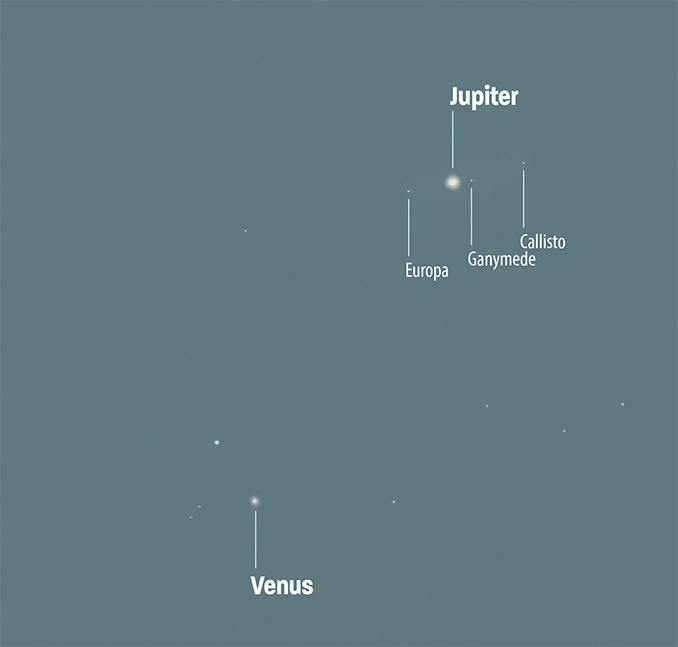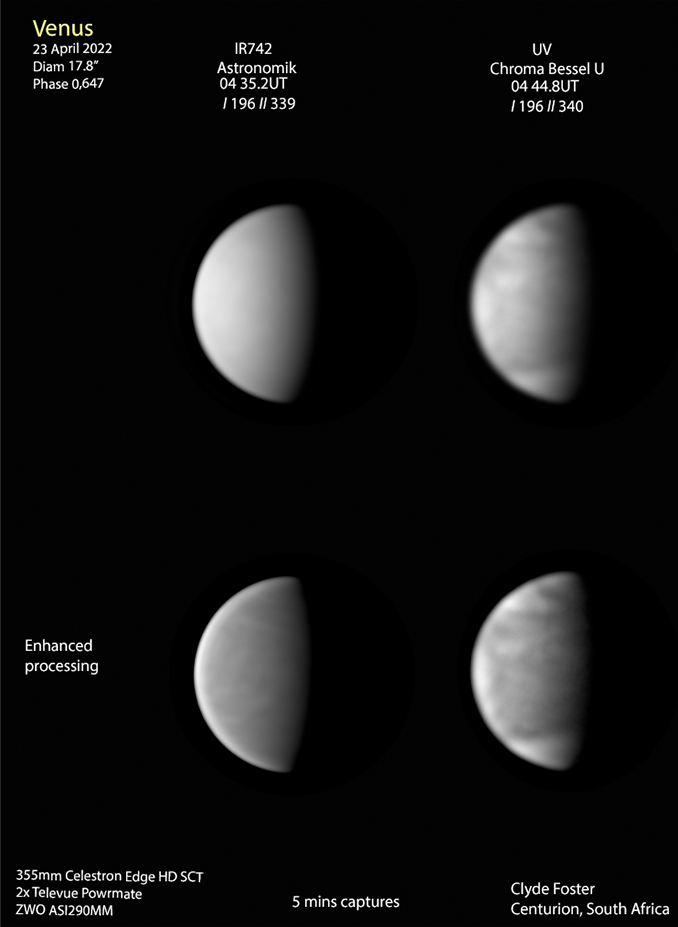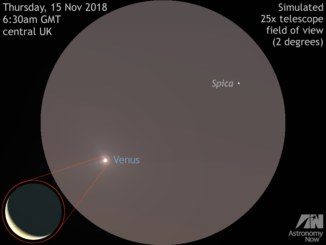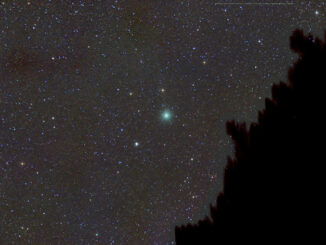
Venus and Jupiter now lie close together in the pre-dawn eastern sky, providing a marvellous albeit lowly sight just before sunrise. Over the next few days, the two brightest planets in the Solar System (Mars can just outshine Jupiter when the red planet’s at its very best) will draw closer together still and on the pre-dawn of 1 May lie a mere 21 arcminutes apart, their minimum separation in UK skies.
Given some clear mornings over the next week or so, and a flat horizon from the east around to the east-south-east, you can soak up the scene with the naked eye and a pair of binoculars as the two brilliant planets rapidly approach each other and then separate, with the pair remaining within the field of view of a pair of 10 x 50 binoculars until the first six days of May.
Remember, before sweeping close to the horizon, whether with the naked eye or especially through optical aid, make absolutely sure that the Sun remains below the horizon from your observing location. Severe and irreversible damage to your eyesight can occur if the Sun accidentally enters your field of view.

Night owls and intrepid early risers will benefit also from the presence of the red planet Mars and Saturn, both shining significantly fainter (both around magnitudes +0.8) though placed higher in the pre-dawn sky further around to the south-east. Mars and Saturn had their own coming-together in the first week of April.
In the pre-dawn sky of Thursday, 28 April, Venus shines at magnitude –4.11, which is around two magnitudes brighter than Jupiter’s still impressive –2.14. Looking eastwards, Jupiter lies just to the lower left of Venus (to the north-east), the planets separated by 2.5 arcminutes. By sunrise from London (~5am BST) Venus has climbed to 10 degrees in altitude, with Jupiter a degree worse off. From Scotland, the pair lie around six degrees up by sunrise (at 5.36am BST in Edinburgh).
Over the course of the next two mornings, the separation between Venus and Jupiter reduces to 1.5 degrees and 42 arcminutes. They are seen side-by-side on the pre-dawn of Saturday, 30 April.

Venus and Jupiter’s great conjunction culminates in UK skies just before sunrise on the pre-dawn of Sunday, 1 May. Jupiter lies just to the upper-right of Venus and their separation is a mere 21 arcminutes, which is around 9 arcminutes more than their absolute close approach at 19–20h UT on 30 April, when Venus lies 0.2 degrees south of Jupiter.
This timing favours Australia and New Zealand on the local pre-dawn of 1 May, when Venus and Jupiter lie around 13 to 14 arcminutes apart and climb to an altitude of around 40 degrees in the east-north-eastern sky by sunrise in Sydney.
Venus and Jupiter will be fixtures in the UK night sky in the forthcoming months. Venus remains visible in the pre-dawn until September, before passing through superior conjunction on 22 October. It’s onwards and upwards for mighty Jupiter as it heads towards opposition on 26 September.




